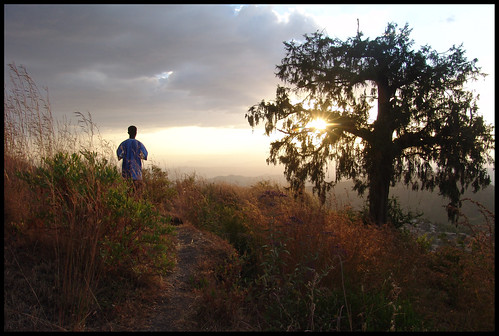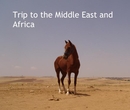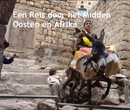Lalibela

With everything going on here in Addis, it is difficult to look back on the three lovely days we had in Lalibela, the eighth wonder of the world, 2,600 metres high in the mountains of Wollo Province. It is surrounded by high flat-topped mountains, many over 3,500 metres high, with Abun Josef, over 4,000 metres high. These mountains are cut into by rivers which create very steep valleys, interspersed with high plateaus on which many animals, sheep, goats and cattle are sent to graze. There are also terraces on which wheat, barley and tef as well as peas and broad beans are grown. As far as I can tell, the population, living in villages, is high relative to the fertility and productiveness of the land.
One goes to Lalibela to see the rock hewn churches, of which there are about 11, all built in the 12th century by Saint Lalibela (means honey eater), even though we do not know how they actually did it. Legend has it that angels came down at nighttimes to help with the construction. They were impressive, although maybe slightly smaller and more cramped than we might have expected.
Briefly, we spent much of our time with James and Rachel, who both live in Brighton and were great company. We visited the churches, walked up and down the steep streets of Lalibela, usually surrounded by school children (the elementary school was opposite our hotel) who were always eager for a chat and to ask whether or not we might be able to buy a dictionary for the school or sponsor a leather football for the local team. This was when we were not being invited in to 'have some coffee' by some attractive local girls. It was all good natured stuff. We met up with some other fellow travellers we had seen earlier on the circuit like Chris and Alasdair from UK, Hella from Austria and a couple of lads from the US who spent an evening talking about Haiti, of all places. We missed out on Michael and Roberto as their flights from Axum had been cancelled. This was due ot the fact that Ethiopian Airlines had chartered out some of its planes to a group of elderly and, apparently decrepit Americans who were using their last days on earth to visit ten countries in twenty days, in far off places such as Iceland, Malta, Ethiopia, Kenya and Vietnam. They arrived in Lalibela one morning and were in Nairobi by the evening. Incredible! We drank too much beer, went to a local tej (honey mead) house and were treated to and participated in local music and dancing.
I went up and down the nearby mountains, on and off a mule for 11 hours to visit a monastery built in a cave (still feeling the stiffness) - but thanks, Mesfin, my guide! The mule was better equipped for taking me up the hlls than down, so I would get off to walk down the hills. This probably meant that during the day, I must have descended at least 2,000 metres, a s we went up and down some very high slopes on the 42 km trek and this put qute a strain on my poor old knees, who were suffering anyway by having to clasp onto the side of the mule! Beautiful countryside, filled with many birds. At times it seemed a bit like a place I know well inthe Lake District (Butterwick) and, strangely enough, I even saw the wheatears, meadow larks and shrikes which one sees up there! Also saw a very large crow with a red beak and white wings... looking forward to identifying this one when I get back. Also saw another beautiful Lammergeier.
It must be said that Lalibela seemed to be the poorest place we have been to in Ethiopia, many cripples, beggars, undersized (so presumably under-nourished) people, many dressed in dirty rags. The mountain slopes were intensively farmed and it was the harvest season, but there were lots and lots of people to be fed. And again, so many children going to and from school (which is organised into three shifts). Where does one find jobs for 20 million Ethiopians is a question we often ask ourselves.
Still, we will look back on Lalibela as an interesting, beautiful place where we had good fun with James and Rachel.
Labels: Ethiopia, Trip to Middle East and Africa




0 Comments:
Post a Comment
<< Home